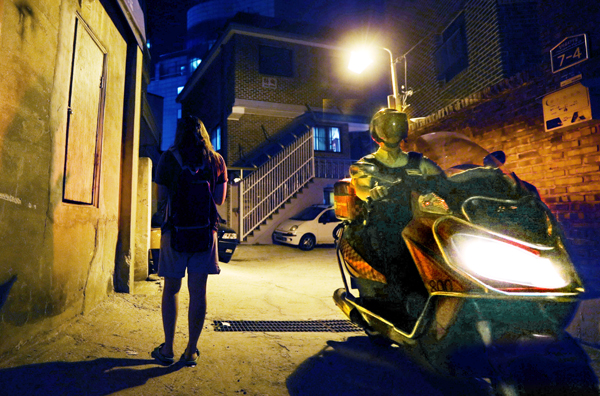An aging society’s crime crisis

While crimes committed by the young are generally self-destructive, incidents involving seniors tend to be more heinous and socially shocking.
Although we want to consider these as exceptional cases, they are increasingly becoming a trend. Nowadays, women are growing more anxious and feel threatened when they see elderly men in dark streets.
Crime by seniors is a scourge of an aged society. It’s been more than 10 years that Japan has been struggling with “reckless seniors.” In the United States, older criminals who have grown bored with life and have become morally insensitive are compared to Faust, who sold his soul to the Devil.
Of course, it is only natural that elderly crime is on the rise as the population of seniors is growing. However, the trend of senior-related crimes in Korea is unique. In Japan, three out of five crimes by senior citizens are theft, and the motive is financial hardship. But 2011 statistics show that 32.5 percent of old-age criminals were charged with assault, 20.9 percent with fraud and 10.5 percent with theft. In the past decade, robbery and rape increased four times, arson 2.7 times and murders doubled. Senior crimes are mostly felonies. The number of offenders between teenagers and 30s is decreasing, while the number of offenders in their 60s and 70s is rapidly growing. Moreover, three out of five criminals in their 60s and 70s are first-time offenders.
The problem is that there is little explanation. After the arsons in Jangseong and at Dogok Station, I looked for studies relating to senior crime and couldn’t find much in-depth research. Just like foreign studies, the research addressed elderly issues such as poverty and alienation, and pointed out improved health conditions as the reasons for increasing crimes. But what we really want to know is what makes the Korean situation so unique, why Korean elderly criminals commit heinous crimes and whether the collapse of patriarchal culture and the custom of respect for the elderly is having an effect. Research on elderly crime needs to investigate the causes of this unique trend. We can only address the issue after we understand the cause.
*The author is an editorial writer of the JoongAng Ilbo.
By YANG SUNNY
JoongAng Ilbo, June 5, Page 31










with the Korea JoongAng Daily
To write comments, please log in to one of the accounts.
Standards Board Policy (0/250자)